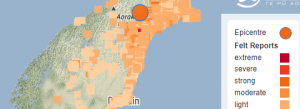An Antarctic penguin accidentally travelled at least 3,000 km (1,864 miles) away from its natural habitat. Now, the Adelie penguin has found itself on New Zealand shores.
The Adelie penguin was found looking clueless on the coast. The locals lovingly named him Pingu.
One of the first local residents, Harry Singh, who found him said that he thought the penguin was a ‘soft toy’, BBC reported.
This is the 3rd recorded incident of an Adelie penguin being recovered on New Zealand’s coast. The other two incidents happened in 1993 and 1962.
Harry and his wife were taking a stroll on the beach Birdlings Flat, an area south of the city of Christchurch.
“First I thought it (was) a soft toy, suddenly the penguin moved his head , so I realized it was real,” BBC quoted Harry as saying.
Harry recorded a video and uploaded it on his Facebook page. In the video, the penguin appears to be lost and alone.
“It did not move for one hour… and [looked] exhausted” he added. He then called the penguin rescuers. He was concerned that the animal was got getting into the water, making him a target for other animals.
“We did not want it to end up in a dog’s or cat’s stomach,” he said.
He eventually got through to Thomas Stracke, who has been rehabilitating penguins on New Zealand’s South Island for about 10 years.
Stracke rescued the penguin and was shocked to find that the penguin belonged to the Adelie species that exclusively live on the Antarctica peninsula.
Several tests were done on Pingu. The results showed that it was slightly underweight and dehydrated. Since then, it has been given fluids via a feeding tube.
Eventually, the bird will be released on a safe beach on Banks Peninsula.
Experts say that Adélie spottings remain rare in New Zealand.
“I think if we started getting annual arrivals of Adélie penguins, we’d go actually, something’s changed in the ocean that we need to understand,” Otago University zoology professor Philip Seddon told news site The Guardian.
“More studies will give us more understanding where penguins go, what they do, what the population trends are like – they’re going to tell us something about the health of that marine ecosystem in general.”






